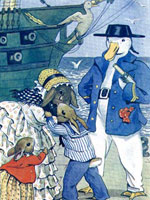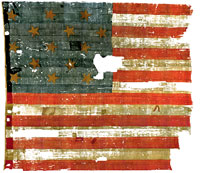As a primary school teacher my focus is on building basic academic skills in ways that are developmentally appropriate for my students. That means we focus most of our time on reading, writing, and math while ensuring that we have chances to play and explore our world.
As one can imagine, this leaves little time for social studies and science. I have standards and objectives to teach in these areas, but they are prioritized below the others. As a result, I look for ways to integrate them into other parts of our day.
Some ways to do so are obvious. When we are working on nonfiction reading skills I carefully choose books about Benjamin Franklin, George Washington, or life in the past. As we explore writing reports I will gently nudge my students towards something about the past that has caught their interest. I stock my classroom library with biographies, history trade books, and historical fiction at appropriate reading levels. I choose read alouds that offer a window into the past, such as Potato: A Tale from the Great Depression by Kate Lied, Train to Somewhere by Eve Bunting, or books from the American Girl or Magic Tree House series.
In addition to those options, I also try to integrate our exploration of history into other areas. One way I do so is to have my students talk to family members and adults in the school about their own histories. Homework might be to ask someone in the family how their experience in school was different from that of my students or what going to the movies was like when they were young. During our morning meeting the next day we’ll talk about what their family members shared with them.
I want to correct misperceptions, expose them to surprising ideas, and generally encourage an interest in understanding how our world has changed over time.
We study data and graphing in math in first grade and I use this as a chance to learn about the past. My students will fan out around the school and interview teachers, administrators, secretaries, lunch room helpers, and custodians about their lives in first grade. They might ask how many channels they had on TV then, did they wear seat belts or ride in car seats, how many telephones were in their house, etc. (I do try to send my students off to interview only those staff members old enough to make a difference here. Our just-out-of-college teachers won’t offer answers different enough to be noticeable.) Then we graph the answers they got from staff members and my students’ answers and look at the differences.
History is fascinating to young children, but it is also very nebulous. They struggle to understand something they can’t see. I try to build it into our days throughout the year to ensure that we are talking about and exploring history as much as possible. I want to correct misperceptions, expose them to surprising ideas, and generally encourage an interest in understanding how our world has changed over time.




